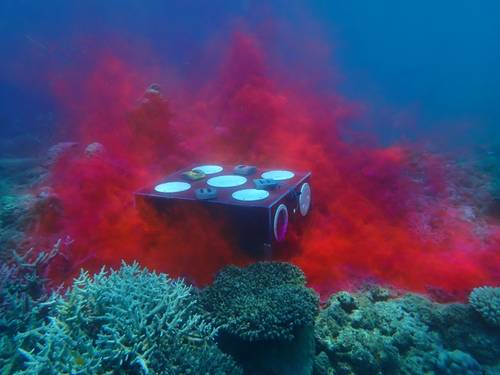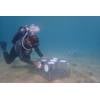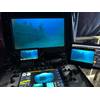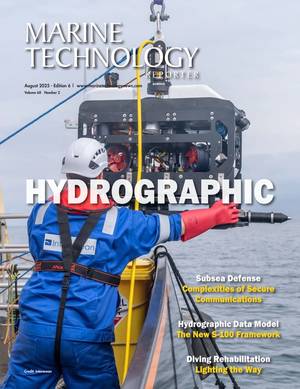Subsea Technology Helps Coral Larvae Find Home

Rhodamine dye is a non-toxic tracer commonly used in aquatic systems to study water movement. In the seed box trial, rhodamine is used to understand patterns of water flow with sensors and drones. The dye helps (i) visualise how long water—and therefore larvae—stay in the area before dispersing, and (ii) track where and how quickly water (and larvae) move after release. Image: G Carlin/CSIRO
This week, researchers at Australia’s Southern Cross University and CSIRO gave hope that millions of coral larvae on the Great Barrier Reef can help replenish degraded reefs thanks to the development of a “larval seedbox.”
Results from the first trial have found coral settlement to be up to 56 times higher across thousands of square meters of reef. Large scale operation is achievable as tens of millions of larvae can be collected during the annual mass coral spawning that occurs each November in the Great Barrier Reef.
The development comes as global warming is crossing dangerous thresholds sooner than expected with the world’s coral reefs now in an almost irreversible die-off - scientists have described this as the first “tipping point” in climate-driven ecosystem collapse.
The last two years were Earth’s warmest on record, with marine heatwaves that stressed 84% of the world’s reefs to the point of bleaching and, in some cases, death. Coral reefs sustain about a quarter of marine life, so this has an adverse impact on marine biodiversity.
Other Australian institutions are working on boosting the chance of larval survival too. Ecologists from the Australian Institute of Marine Science and others have developed techniques to raise young corals in aquaculture by the hundreds of thousands and deploy them across the Reef.
A deployment guidance system combines the latest in marine robotics and AI to place young corals, housed in purpose-built devices, across the Reef in locations where they are likely to grow to adulthood.
The coral seeding devices have been designed for the specific needs of large-scale reef restoration on the Great Barrier Reef. These small ceramic objects house tiles to which juvenile corals attach. Once dropped to the seafloor, the devices help protect the young corals, giving them a better chance of reaching adulthood.
First, the system selects promising sites using a computer model based on knowledge provided by reef ecologists. Then, once at a suitable location, the system uses cameras and real-time AI analysis to guide the deployment of reef seeding devices.
Modelling by the University of Queensland forecasts that, under the current global emissions pathway, the Great Barrier Reef could lose most of its coral by the end of the century.
Dr Yves-Marie Bozec says: “We forecast a rapid coral decline before the middle of this century regardless of the emissions scenario. Corals may partially recover after 2050, but only if ocean warming is sufficiently slow to allow natural adaptation to keep pace with temperature changes.
“Adaptation may keep pace if global warming does not exceed 2 degrees by 2100. For that to happen, more action is needed globally to reduce carbon emissions which are driving climate change.”





![Aerial view of the Rock Islands and coral seascape at the Republic of Palau. [Photo credit: The Nature Conservancy]](https://images.marinetechnologynews.com/images/maritime/w100h100padcanvas/aerial-view-rock-165050.jpg)










 August 2025
August 2025



